
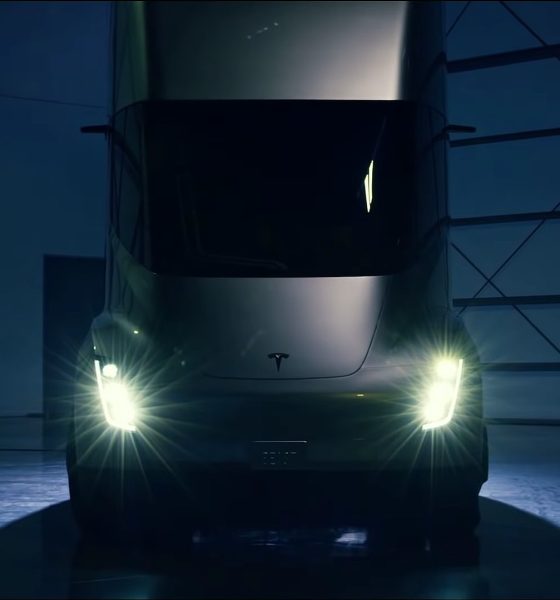
News
Tesla Semi could save lives if used as a military vehicle
The Tesla Semi features several benefits over traditional petrol-powered trucks. It’s faster, quieter, more powerful, and it’s far cheaper to operate. These characteristics give the Semi the potential to change the long-haul industry. But as it turns out, the Semi has the potential to revolutionize the military’s logistics as well, and it will likely save a lot of lives in the process.
As noted in a Breaking Defense report, access to gas during times of conflict comes at a terrible cost. In Afghanistan and Iraq, for example, hundreds of American troops have been slain and thousands more have been wounded over the years while moving supplies. Fuel, which is usually transported through large convoys of trucks, just happens to be very easy targets, and they do tend to get attacked.
Lt. Gen. Eric Wesley, the head of the US Army’s Futures & Concepts Center, noted that the military’s logistics burden gets drastically reduced once the need for gas sees a dramatic reduction. If the military stops employing long convoys of oil trucks during times of conflict, hundreds of lives could quite literally be saved. One way to accomplish this, of course, is through the use of electric trucks, such as the Tesla Semi.
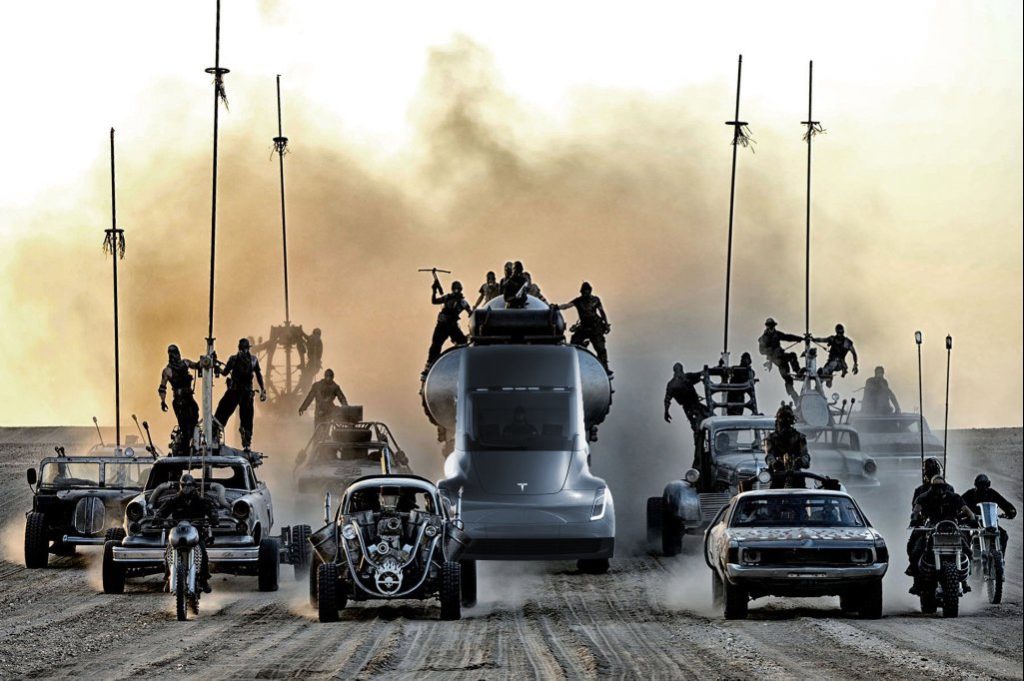
Electric vehicles already present several advantages compared to petrol-powered machines. They’re inherently quiet, making them very difficult to detect. They’re easy to maintain as well, since they have relatively few parts compared to an internal combustion-powered vehicle. EVs can even stay off the grid for extended periods, provided that they are provided a setup that allows them to charge, such as solar panels and a battery storage unit.
“Battery costs have gone down precipitously over the last ten years. Recharge times have dropped, and ranges has grown longer. The trajectory that all of that is on, in the next two years, it’ll be far more efficient to have an electric vehicle than internal combustion, so we’re already, I would argue, late to the need,” he said.
Apart from not needing any gas, electric vehicles like the Semi can also generate power for high-tech combat systems such as sensors, command networks, and even some advanced weaponry. A Tesla Semi outfitted for the army could even be equipped with some batteries to serve as a charging station for other electric army vehicles. Granted, Wesley noted that batteries today may not be energy-dense enough to power heavy equipment like tanks yet, but for light tactical vehicles, EVs are already a good fit for the army’s needs.
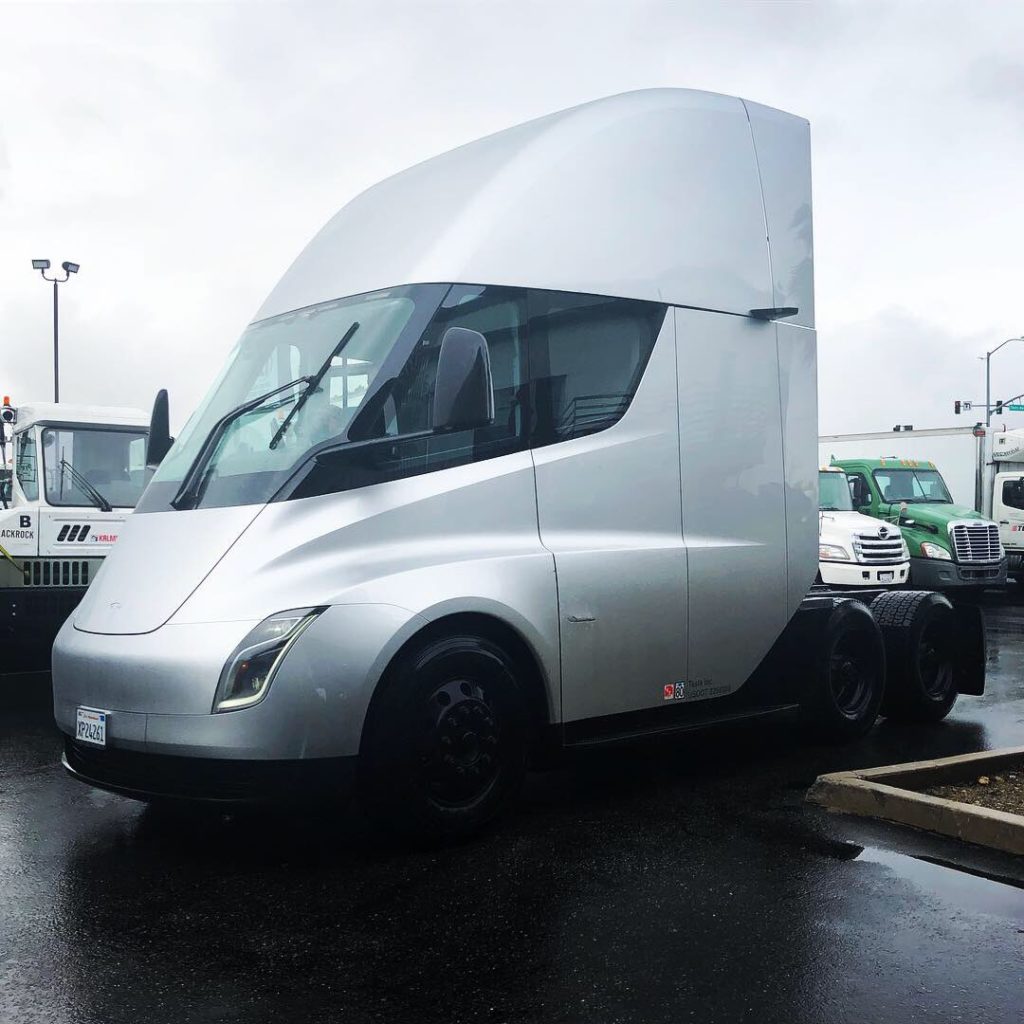
Of course, there are still several challenges that need to be addressed before electric vehicles can be deployed for the military. The costs of transitioning the military’s current fleet to EVs is also substantial, and other issues such as charging infrastructure must be ironed out. The supply chains for electric army vehicles must also be secured. Yet considering that an all-electric transportation sector is all but assured today, addressing such challenges may very well be a priority.
The Lt. General’s team is currently producing a white paper that will explore the idea of electric military machines. The study will be submitted to the four-star chief of Army Futures Command, Gen. John “Mike” Murray. For Lt. General Wesley, transitioning the army to EVs may very well be a pertinent goal, considering that the age of the internal combustion engine may be ending.
“Tesla is building large [semitrailer] trucks. UPS and FedEx are starting to buy these vehicles to learn how they move into that area. The entire automotive industry is migrating towards this idea of electrification, and there’s a lot of good reasons for it. And as the entire industry goes to electrification, the supply of internal combustion engine parts is going to go down and therefore prices are going to go up,” he said.

News
Waymo scrutinized after self-driving taxis cause traffic jams during SF blackout
It’s not farfetched to speculate that it would have been a doomsday scenario for Tesla had FSD behaved this way.
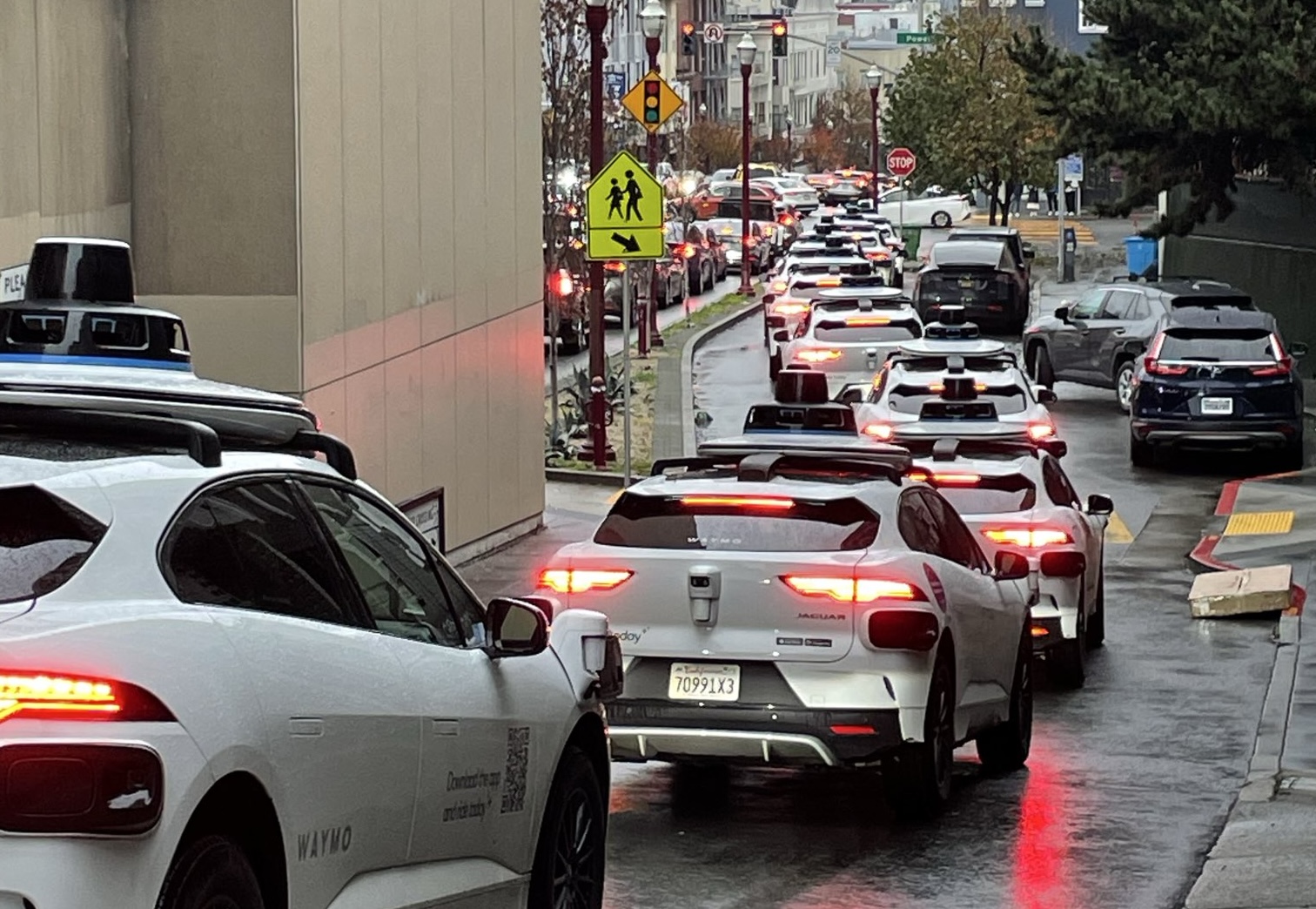
A power outage across San Francisco over the weekend forced numerous Waymo self-driving taxis to stop at darkened intersections and cause traffic blockages in multiple locations across the city. The disruption left riders stranded, frustrated drivers blocked, and city officials stepping in as the Alphabet-owned company temporarily suspended service amid the widespread gridlock.
Needless to say, it would likely have been a doomsday scenario for Tesla had FSD behaved in a similar way, especially if fleets of its robotaxis blocked traffic for numerous drivers.
Power outage halts Waymo fleet
The outage knocked out electricity for tens of thousands of customers, leaving traffic signals dark across large parts of the city, as noted in a report from the New York Times. Waymo vehicles began stopping at intersections and remained stationary for extended periods, seemingly unable to operate. Tow truck operators worked through the night removing immobilized vehicles, while videos circulated online showing Waymos with hazard lights flashing as traffic backed up around them.
Waymo later confirmed that it had paused its Bay Area ride-hailing service after the San Francisco mayor’s office contacted the company about the congestion its vehicles were contributing to. Service began coming back online shortly after 3:30 p.m. local time, though some users still reported being unable to request rides. Waymo maintained that no injuries or accidents were reported during the outage.
Autonomous cars during emergencies
The incident surprised industry observers since autonomous vehicles are designed to function during signal outages and temporary connectivity losses. Waymo stated that its vehicles treat nonfunctional signals as four-way stops, but “the sheer scale of the outage led to instances where vehicles remained stationary longer than usual to confirm the state of the affected intersections. This contributed to traffic friction during the height of the congestion.” Experts suggested the problem may have been linked to the vehicles’ reliance on remote assistance teams, which help resolve complex situations the cars cannot handle independently.
“Yesterday’s power outage was a widespread event that caused gridlock across San Francisco, with non-functioning traffic signals and transit disruptions. While the failure of the utility infrastructure was significant, we are committed to ensuring our technology adjusts to traffic flow during such events,” the Waymo spokesperson stated, adding that it is “focused on rapidly integrating the lessons learned from this event, and are committed to earning and maintaining the trust of the communities we serve every day.”
News
Tesla aims to combat common Full Self-Driving problem with new patent
Tesla writes in the patent that its autonomous and semi-autonomous vehicles are heavily reliant on camera systems to navigate and interact with their environment.
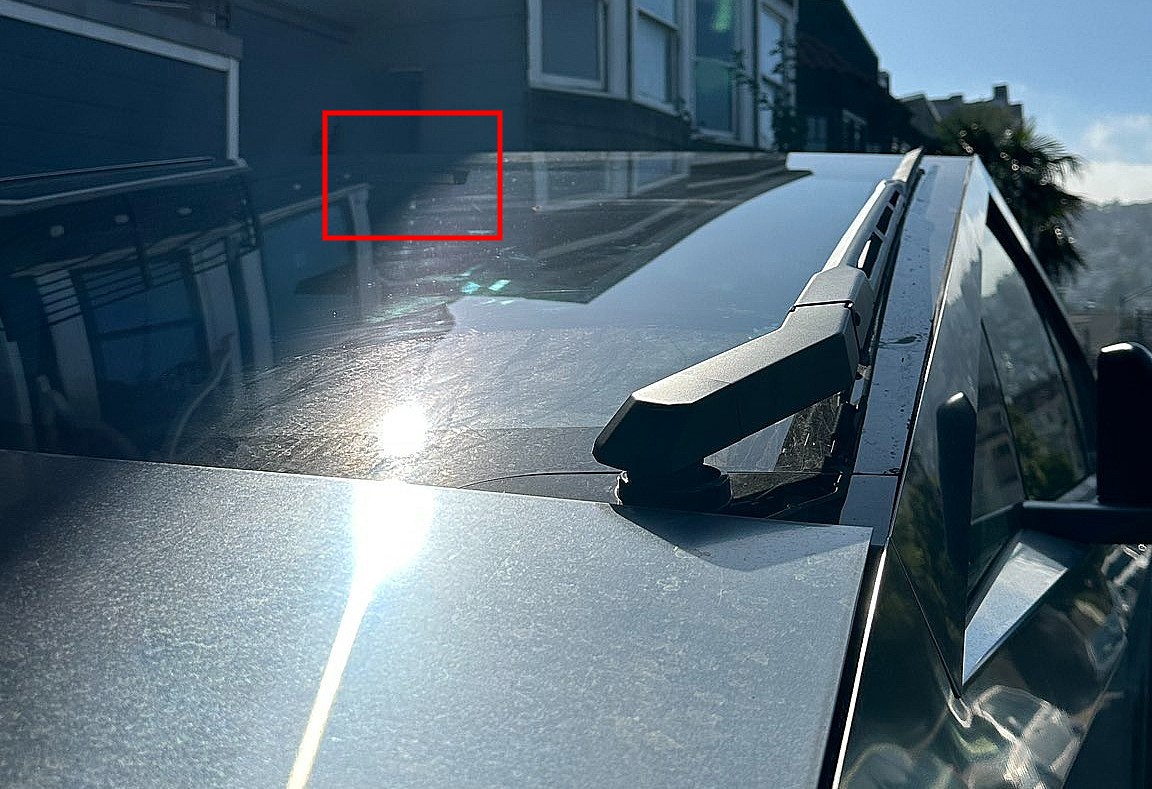
Tesla is aiming to combat a common Full Self-Driving problem with a new patent.
One issue with Tesla’s vision-based approach is that sunlight glare can become a troublesome element of everyday travel. Full Self-Driving is certainly an amazing technology, but there are still things Tesla is aiming to figure out with its development.
Unfortunately, it is extremely difficult to get around this issue, and even humans need ways to combat it when they’re driving, as we commonly use sunglasses or sun visors to give us better visibility.
Cameras obviously do not have these ways to fight sunglare, but a new patent Tesla recently had published aims to fight this through a “glare shield.”
Tesla writes in the patent that its autonomous and semi-autonomous vehicles are heavily reliant on camera systems to navigate and interact with their environment.

The ability to see surroundings is crucial for accurate performance, and glare is one element of interference that has yet to be confronted.
Tesla described the patent, which will utilize “a textured surface composed of an array of micro-cones, or cone-shaped formations, which serve to scatter incident light in various directions, thereby reducing glare and improving camera vision.”

The patent was first spotted by Not a Tesla App.
The design of the micro-cones is the first element of the puzzle to fight the excess glare. The patent says they are “optimized in size, angle, and orientation to minimize Total Hemispherical Reflectance (THR) and reflection penalty, enhancing the camera’s ability to accurately interpret visual data.”
Additionally, there is an electromechanical system for dynamic orientation adjustment, which will allow the micro-cones to move based on the angle of external light sources.
This is not the only thing Tesla is mulling to resolve issues with sunlight glare, as it has also worked on two other ways to combat the problem. One thing the company has discussed is a direct photon count.
CEO Elon Musk said during the Q2 Earnings Call:
“We use an approach which is direct photon count. When you see a processed image, so the image that goes from the sort of photon counter — the silicon photon counter — that then goes through a digital signal processor or image signal processor, that’s normally what happens. And then the image that you see looks all washed out, because if you point the camera at the sun, the post-processing of the photon counting washes things out.”
Future Hardware iterations, like Hardware 5 and Hardware 6, could also integrate better solutions for the sunglare issue, such as neutral density filters or heated lenses, aiming to solve glare more effectively.
Elon Musk
Delaware Supreme Court reinstates Elon Musk’s 2018 Tesla CEO pay package
The unanimous decision criticized the prior total rescission as “improper and inequitable,” arguing that it left Musk uncompensated for six years of transformative leadership at Tesla.

The Delaware Supreme Court has overturned a lower court ruling, reinstating Elon Musk’s 2018 compensation package originally valued at $56 billion but now worth approximately $139 billion due to Tesla’s soaring stock price.
The unanimous decision criticized the prior total rescission as “improper and inequitable,” arguing that it left Musk uncompensated for six years of transformative leadership at Tesla. Musk quickly celebrated the outcome on X, stating that he felt “vindicated.” He also shared his gratitude to TSLA shareholders.
Delaware Supreme Court makes a decision
In a 49-page ruling Friday, the Delaware Supreme Court reversed Chancellor Kathaleen McCormick’s 2024 decision that voided the 2018 package over alleged board conflicts and inadequate shareholder disclosures. The high court acknowledged varying views on liability but agreed rescission was excessive, stating it “leaves Musk uncompensated for his time and efforts over a period of six years.”
The 2018 plan granted Musk options on about 304 million shares upon hitting aggressive milestones, all of which were achieved ahead of time. Shareholders overwhelmingly approved it initially in 2018 and ratified it once again in 2024 after the Delaware lower court struck it down. The case against Musk’s 2018 pay package was filed by plaintiff Richard Tornetta, who held just nine shares when the compensation plan was approved.
A hard-fought victory
As noted in a Reuters report, Tesla’s win avoids a potential $26 billion earnings hit from replacing the award at current prices. Tesla, now Texas-incorporated, had hedged with interim plans, including a November 2025 shareholder-approved package potentially worth $878 billion tied to Robotaxi and Optimus goals and other extremely aggressive operational milestones.
The saga surrounding Elon Musk’s 2018 pay package ultimately damaged Delaware’s corporate appeal, prompting a number of high-profile firms, such as Dropbox, Roblox, Trade Desk, and Coinbase, to follow Tesla’s exodus out of the state. What added more fuel to the issue was the fact that Tornetta’s legal team, following the lower court’s 2024 decision, demanded a fee request of more than $5.1 billion worth of TSLA stock, which was equal to an hourly rate of over $200,000.
Delaware Supreme Court Elon Musk 2018 Pay Package by Simon Alvarez








